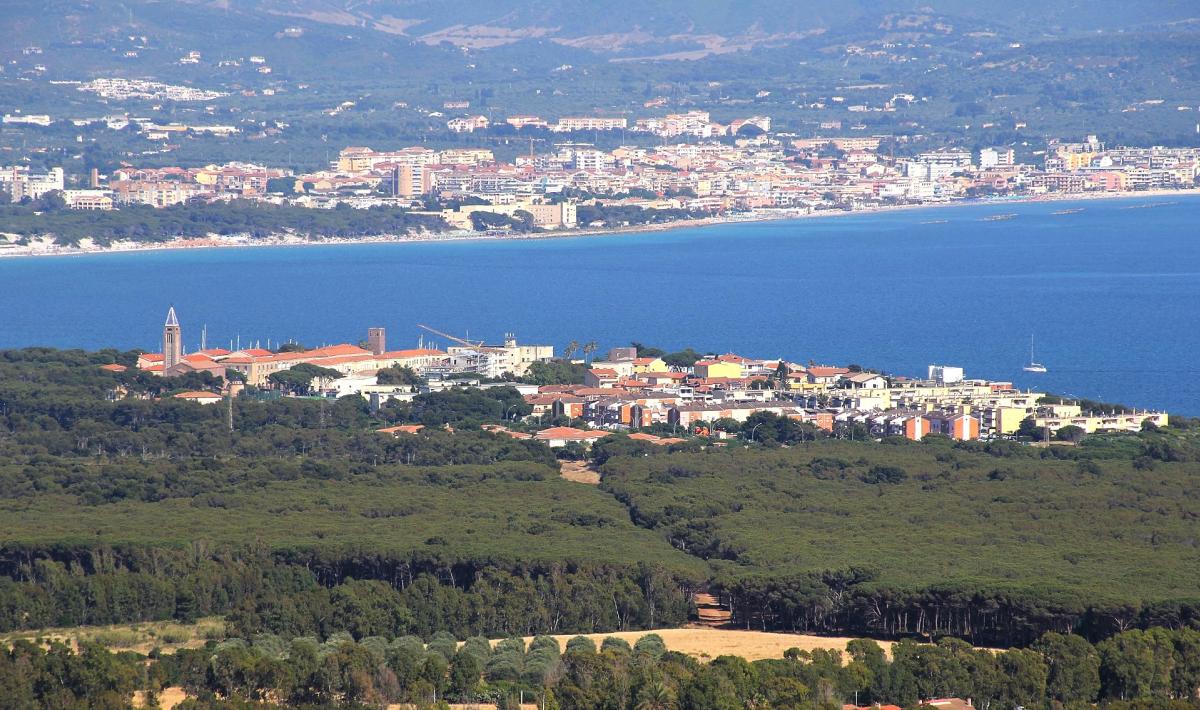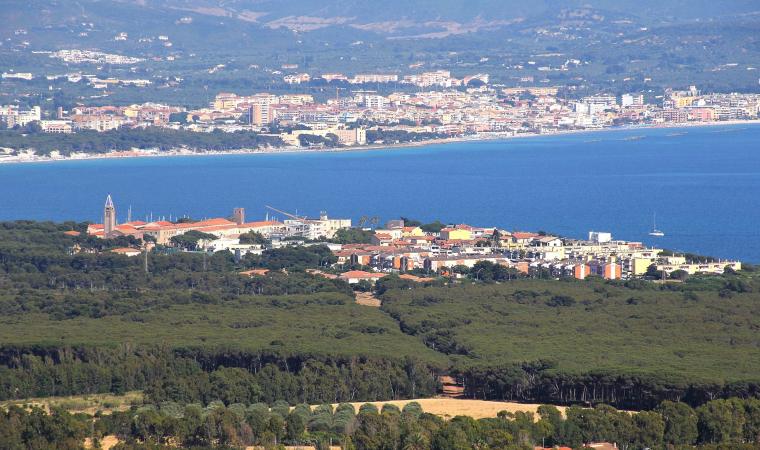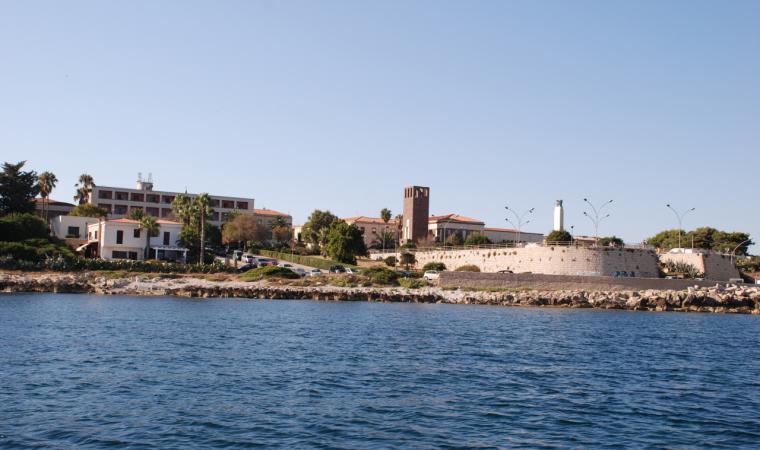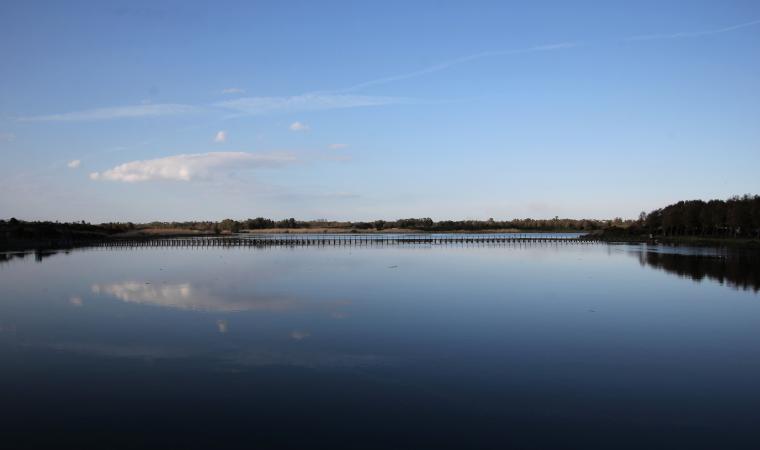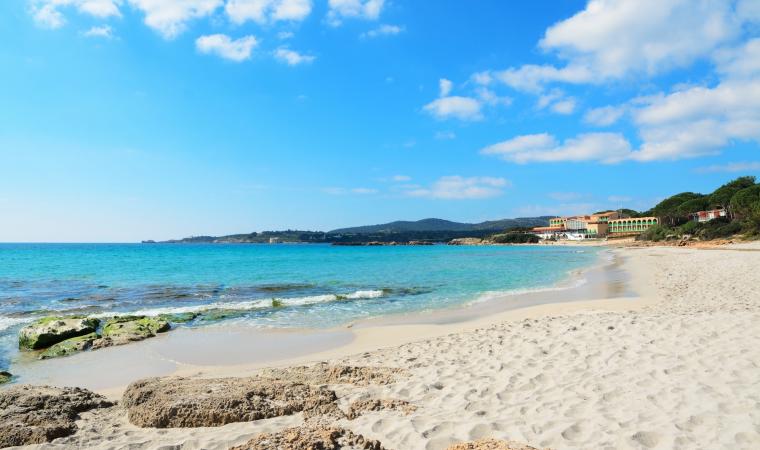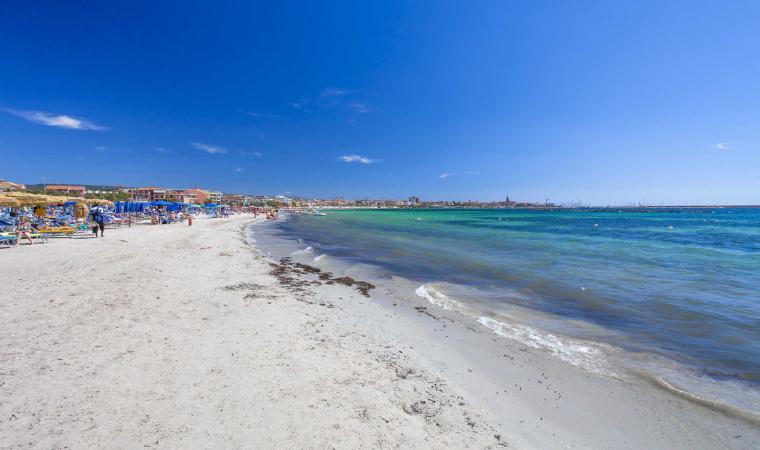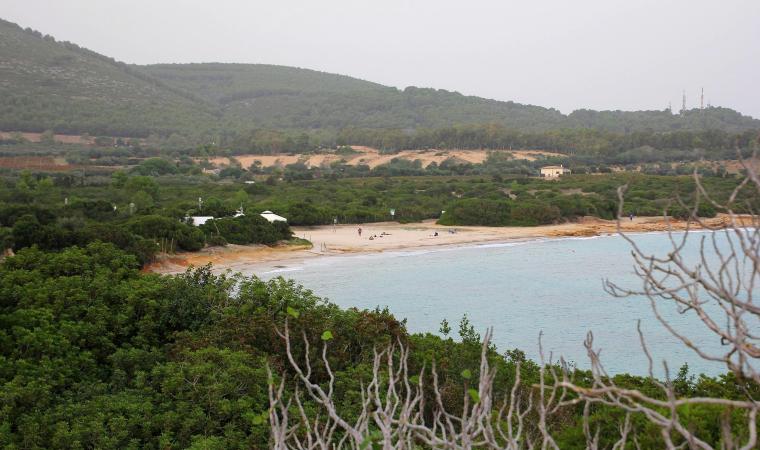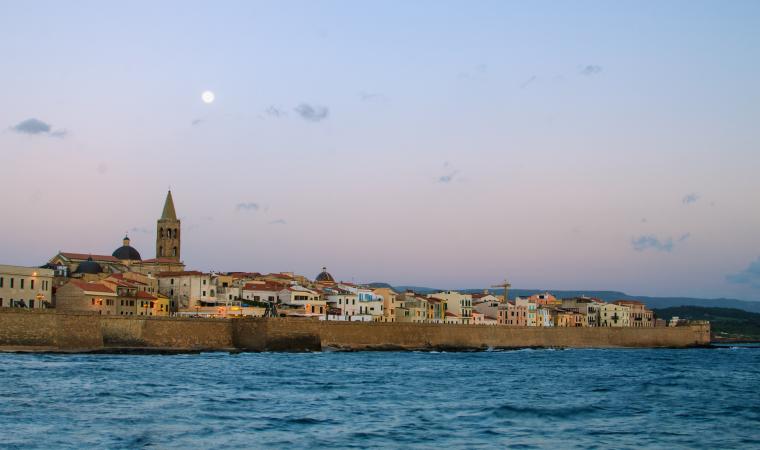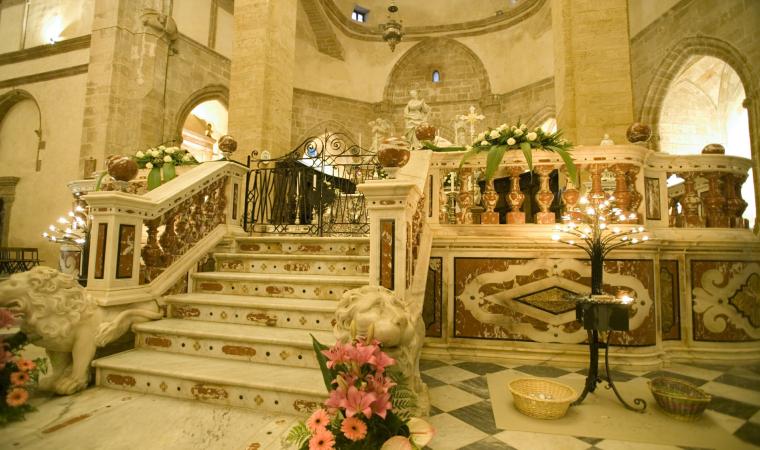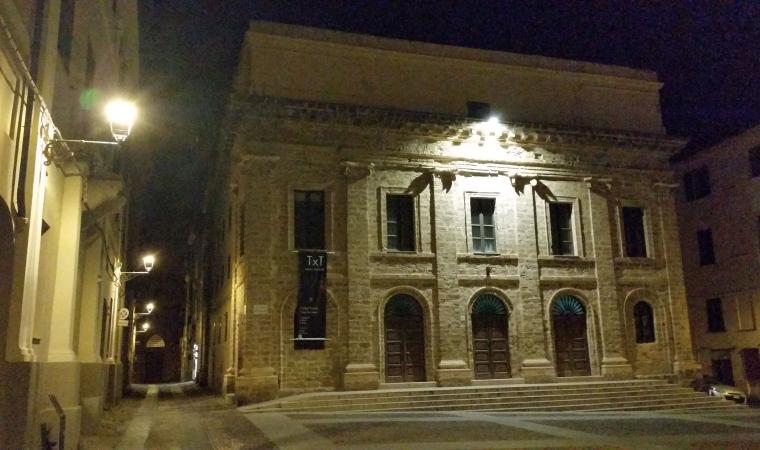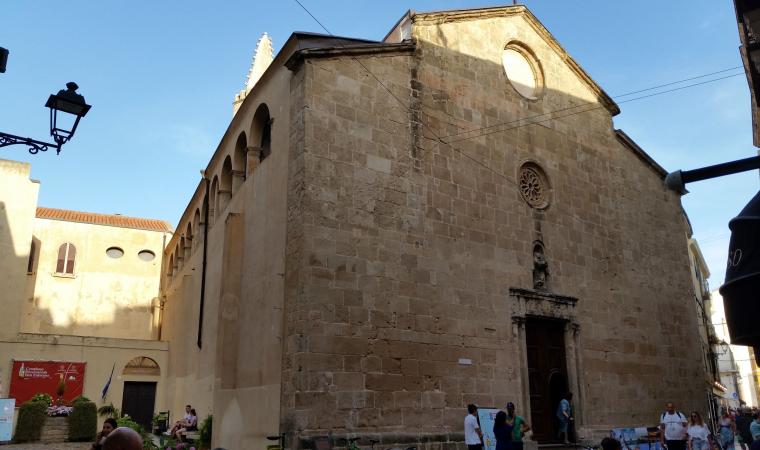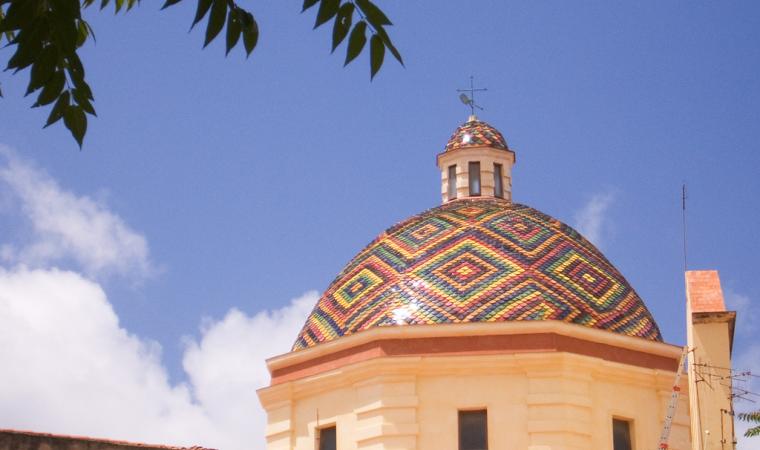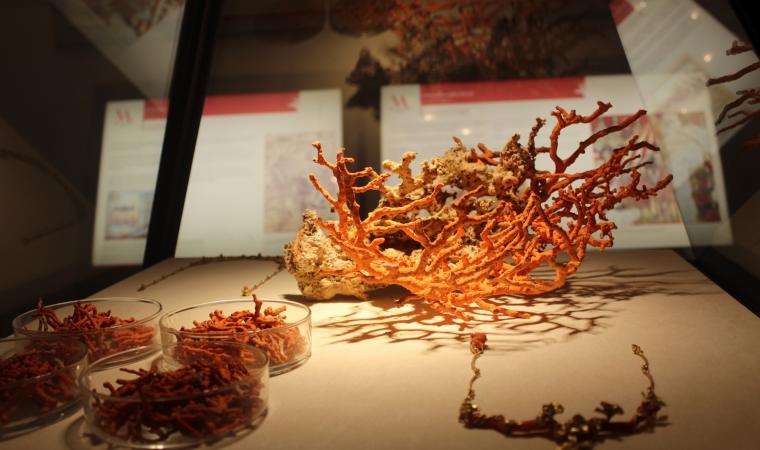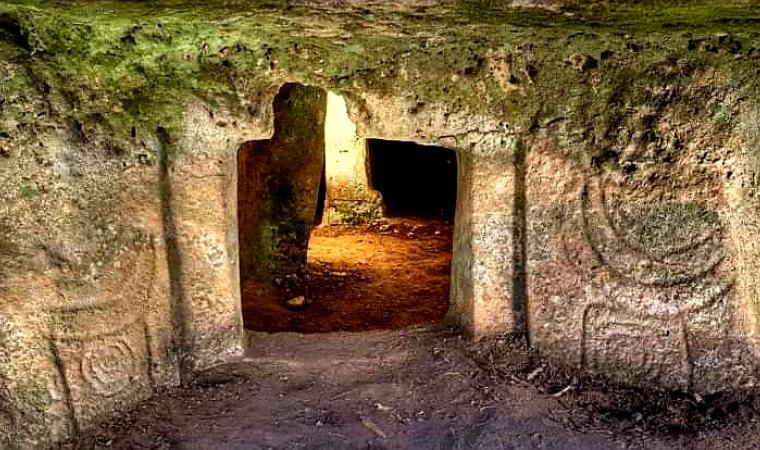It was the last ‘town of Il Duce’ on the Island, after Mussolinia (then Arborea) and Carbonia, built in a position ‘explicitly’ opposite Alghero, on the northern side of the Coral Riviera, clearly visible from the bastions of the ancient Catalan city of which it is now a hamlet. Fertilia is a small village with two thousand inhabitants, very similar to the original village that survived on agriculture and fishing in the recent past and that is now Sardinia’s tourist ‘gateway’, thanks to the airport, five kilometres from the little village.
Towers, buildings and the surrounding countryside tells us about the village’s origins and events: rationalist architecture, land transformations, memory and removal policies and the superimposition of cultures starting from the nineteen thirties. In the context of a decade of reclamation and migration, the Ferrarese (later Sardinian) Colonisation Institution was entrusted with creating the conditions necessary for founding the ‘new town’ that, based on the intentions of the fascist regime, should have risen to become the fulcrum of the territory, an alternative to Alghero, while the new citizens were supposed to ‘Italianise’ the old community, guardians of the Catalan language and culture. And so it was that Nurra, a marshy, malarial land that was isolated and depopulated at the time, became an ‘exotic’ destination for rural families from Ferrara, who first lived in scattered cottages and later populated the newly formed Fertilia.
The prelude to its foundation was the reclamation of the Calich lagoon, which began at the end of the 19th century. The first futuristic construction project, however, dates back to 1935. It was drawn up by Arturo Miraglia and was based on the model of the town that was widespread across the territory and borrowed from the English ‘garden-cities’. However, it was not congenial to the fascist ideology and so it was pushed aside. Two years later, the task was entrusted to four architects united under the acronym 2PST, who started work using the previous design, but transformed it with an orthogonal layout, in order to separate religious, civic and commercial spaces. The village was built in a rationalist, sombre style, centred on an axis - Via Pola - which reaches the church square from the sea. Two blocks of symmetrical buildings were built along the sides, as well as arcades made of red trachyte, inspired by classicism cleaned of superfluous elements.
On 8 March 1936, the laying of the first stone of the parish church of Sacro Cuore was celebrated. In reality, at the time of the inauguration, the only building standing was the elementary school, dating back to the Miraglia project, with bold architecture distinct from the autarchic character of the ones that followed. In the two-year period from 1939 to 1941, a municipal building with a ‘littoria’ (fascist architecture) tower, a ‘casa del fascio’ building and a hotel were built on the seafront, while a post office building, a barracks and the headquarters of the reclamation institute were constructed along the arcades. The works were interrupted in 1942, due to the tragic situation of the Second World War, and were completed around the middle of the 20th century, when the little village welcomed refugees from Italian lands who had passed to the reborn Yugoslavia. This was the second chapter of history, from the unfinished symbol of the fascist regime to a ‘port of salvation’: complicated integration took place between 1948 and 1952.
The influence of Ferrara can still be traced in surnames, dialect and cuisine, while numerous references to Venice and Friuli are in the streets, squares and symbols: a commemorative column with a ‘Venetian’ winged lion above it stands on the waterfront. The parish church, in Fertilia’s ‘second life’, was dedicated to St. Mark the Evangelist. Its gabled façade has an entrance with a large window, through which you can see the main hall and its works of art with a mosaic that stands out on the main altar by Sardinian artist Giuseppe Biasi. The baptistery and bell tower, added in 1955, are joined to the main body.
The village stands on the point where the Calich, which stretches for almost a hundred hectares and is included in the Park of Porto Conte, rejoins the sea through the Fertilia canal: here, you will see the ruins of a bridge of Roman origin and restored in the Middle Ages, which connected Nurra and Bosano for thousands of years. The village beach is Punta Negra (meaning Black Tip), due to the colour of the rocks that surround it, a few kilometres from Le Bombarde and the Lazzaretto, the most famous beaches on the Riviera along with the ‘city’ beaches of Lido di San Giovanni and Maria Pia. Much of the coast is protected by the marine area of Capo Caccia and its treasures can be reached by sea from the marina of Fertilia.

